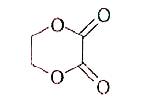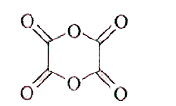A: Reaction of carboxylic acid with hydrazoic acid in the presence of conc. H2SO4 to form primary amine is called Schmidt reaction.
R: In this reaction isocyanate intermediate is formed.
If both Assertion & Reason are true and the reason is the correct explanation of the assertion, then mark (1).
If both Assertion & Reason are true but the reason is not the correct explanation of the assertion, then mark (2)
If Assertion is true statement but Reason is false, then mark (3)
If both Assertion and Reason are false statements, then mark (4)
The correct Answer is:2
To solve the question, we need to analyze both the assertion (A) and the reason (R) provided in the statement.
1. Understanding the Assertion (A):
- The assertion states that the reaction of carboxylic acid with hydrazoic acid in the presence of concentrated sulfuric acid (H₂SO₄) to form a primary amine is called the Schmidt reaction.
- This is true. The Schmidt reaction involves the conversion of carboxylic acids into primary amines through the reaction with hydrazoic acid.
2. Understanding the Reason (R):
- The reason states that in this reaction, an isocyanate intermediate is formed.
- This is also true. During the Schmidt reaction, an isocyanate intermediate is indeed formed before the final product (the primary amine) is obtained.
3. Examining the Relationship Between A and R:
- While both the assertion and the reason are true, we need to determine if the reason is the correct explanation for the assertion.
- The formation of the isocyanate intermediate is a part of the mechanism of the Schmidt reaction, but it does not directly explain why the reaction itself is called the Schmidt reaction. The naming of the reaction is based on the overall transformation of carboxylic acids to primary amines, not solely on the formation of the isocyanate.
4. Conclusion:
- Therefore, the assertion is true, and the reason is true, but the reason is not the correct explanation for the assertion.
- The correct answer is that both A and R are true, but R is not the correct explanation for A.
Final Answer:
- Assertion (A) is true.
- Reason (R) is true, but it is not the correct explanation for the assertion.
- Thus, the answer is: Assertion and Reason are true, but Reason is not the explanation for Assertion.
---
- The assertion states that the reaction of carboxylic acid with hydrazoic acid in the presence of concentrated sulfuric acid (H₂SO₄) to form a primary amine is called the Schmidt reaction.
- This is true. The Schmidt reaction involves the conversion of carboxylic acids into primary amines through the reaction with hydrazoic acid.
- The reason states that in this reaction, an isocyanate intermediate is formed.
- This is also true. During the Schmidt reaction, an isocyanate intermediate is indeed formed before the final product (the primary amine) is obtained.
- While both the assertion and the reason are true, we need to determine if the reason is the correct explanation for the assertion.
- The formation of the isocyanate intermediate is a part of the mechanism of the Schmidt reaction, but it does not directly explain why the reaction itself is called the Schmidt reaction. The naming of the reaction is based on the overall transformation of carboxylic acids to primary amines, not solely on the formation of the isocyanate.
- Therefore, the assertion is true, and the reason is true, but the reason is not the correct explanation for the assertion.
- The correct answer is that both A and R are true, but R is not the correct explanation for A.
- Assertion (A) is true.
- Reason (R) is true, but it is not the correct explanation for the assertion.
- Thus, the answer is: Assertion and Reason are true, but Reason is not the explanation for Assertion.
Similar Questions
Knowledge Check
When ethylene glycol is heated with oxalic acid in the presence of conc. H2SO4, the product formed is :
A B
B C
C D
D
The reaction between ethanol and ethanoic acid in the presence of conc. sulphuric acid is called
AneutralisationBsaponificationCdehydrationDesterification
The heating of oxime of acetone in presence of conc. H2SO4 to form N - methyl ethanamide is called
View SolutionDecomposition of oxalic acid in the presence of conc H−2SO4 gives :
View SolutionIn esterification reaction, the role of conc. H2SO4 is
View SolutionIn acid catalysed hydration of alkenes, reaction intermediate formed is
View SolutionHeating mxiture of ethyl alcohol and acetic acid in presence of conc. H2SO4 produces a fruity smelling compound. This reaction is called :
View SolutionThe reaction of an amide with bromine and alkali to form a primary amine is called:-
View Solution
